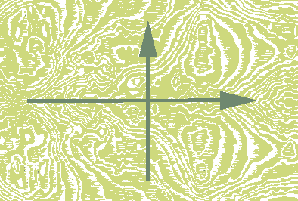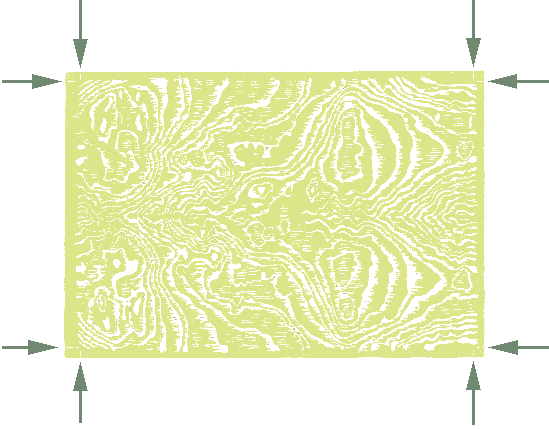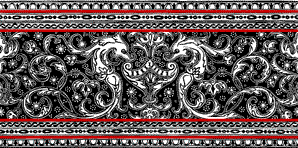
F L E M I S H P A P E R S
Designs made from wood blocks
hand cut by Grant O’Brien
Catalogue of the available Flemish papers.
Prices of machine-printed Flemish papers.
Prices of hand-printed Flemish papers
How to pay for the Flemish papers you have ordered
Hints on laying the Flemish 'silk' paper (O'Brien Type 1)
Hints on decorating the papers after they are laid.
The 'Vermeer' paper (O'Brien Type 15)
Hints on laying the 'silk' paper - O’Brien Type 1
This paper is often known as the 'silk' paper because of its similarity to green watered silk. This paper has interesting symmetry properties and each paper is rotated relative to the one just laid to make a pattern that has a repeat that is twice as long as the length of the paper itself. The edges of the paper are marked where they are to be cut away, and the images below are the cut-away versions of the papers. Unlike most papers its pattern doesn't simply flow from one edge into the next paper to give a repeat of the pattern. Instead, if the main pattern:

is rotated through 180°:

and these two patterns are placed end-to-end:



as many times as required for the space to be filled, then both ends of the pattern, although lacking any vertical symmetry, flow from one into the other.
Also, the pattern, although also apparently different at the top and bottom edges, flows vertically in both orientations of the papers:




so that any number of papers can be laid one next to the other to create a continuous 'silk' pattern with a repeat that is two full widths of the individual single paper:












! ?Now isn't that clever? !
![]()
As mentioned elsewhere the edges of this paper are marked where the paper should be cut in order to get the effect discussed above. These marks are indicated with arrows in the figure below.

But beware:
If the paper is cut to length using the vertical marks, the horizontal marks which indicate the correct width of the paper will be cut away in the process. It is necessary, therefore, to make very small cut marks in the top and at the bottom of the paper near the marks but just inside the vertical marks to indicate where the width has to be cut after the sides are cut away. The paper can then be cut to width using the knife cut marks as guides.
THEREFORE DO NOT CUT THE PAPER TO LENGTH BY CUTTING OFF THE ENDS OF THE PAPER WITHOUT FIRST MAKING THE NECESSARY CUT MARKS TO INDICATE WHERE THE PAPER IS TO BE CUT TO WIDTH.
Catalogue of the available hand-made Flemish papers.
Prices of machine-printed Flemish papers.
Prices of hand-printed Flemish papers
How to pay for the Flemish papers you have ordered
Hints on decorating the papers after they are laid.
The 'Vermeer' paper (O'Brien Type 15)
Drawings are available some of which show how to decorate the papers after laying
The Ruckers book has been re-published by CUP. Buy a copy signed by the author
Return to the main page of this section


